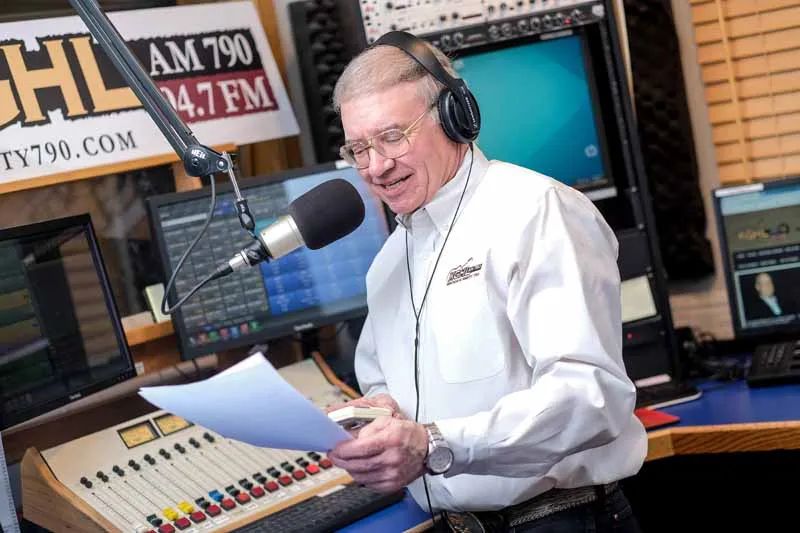
The Voice of Montana Agriculture
In Montana Ag Circles, There’s no Leader Quite Like Taylor Brown
Taylor Brown might have the most recognizable voice in Montana.
During his four-decade career as a television and radio broadcaster, Taylor’s distinctive, enthusiastic voice has been heard all over eastern Montana and northern Wyoming, delivering the latest news about virtually every aspect of agriculture.
As one of the most sought-after public speakers in the region, that voice has delivered countless speeches at conventions, seminars, banquets and annual meetings. Others still listened as he led farm and ranch tours organized not only by the Billings Area Chamber of Commerce but tours to all corners of the nation and international tours in several foreign countries.
He’s narrated videos made by companies, organizations and nonprofits, spoken numerous times at the Montana Legislature, first as an advocate and then as a two-term state senator, and for 10 years he was the football announcer for the Huntley Project High School football team.
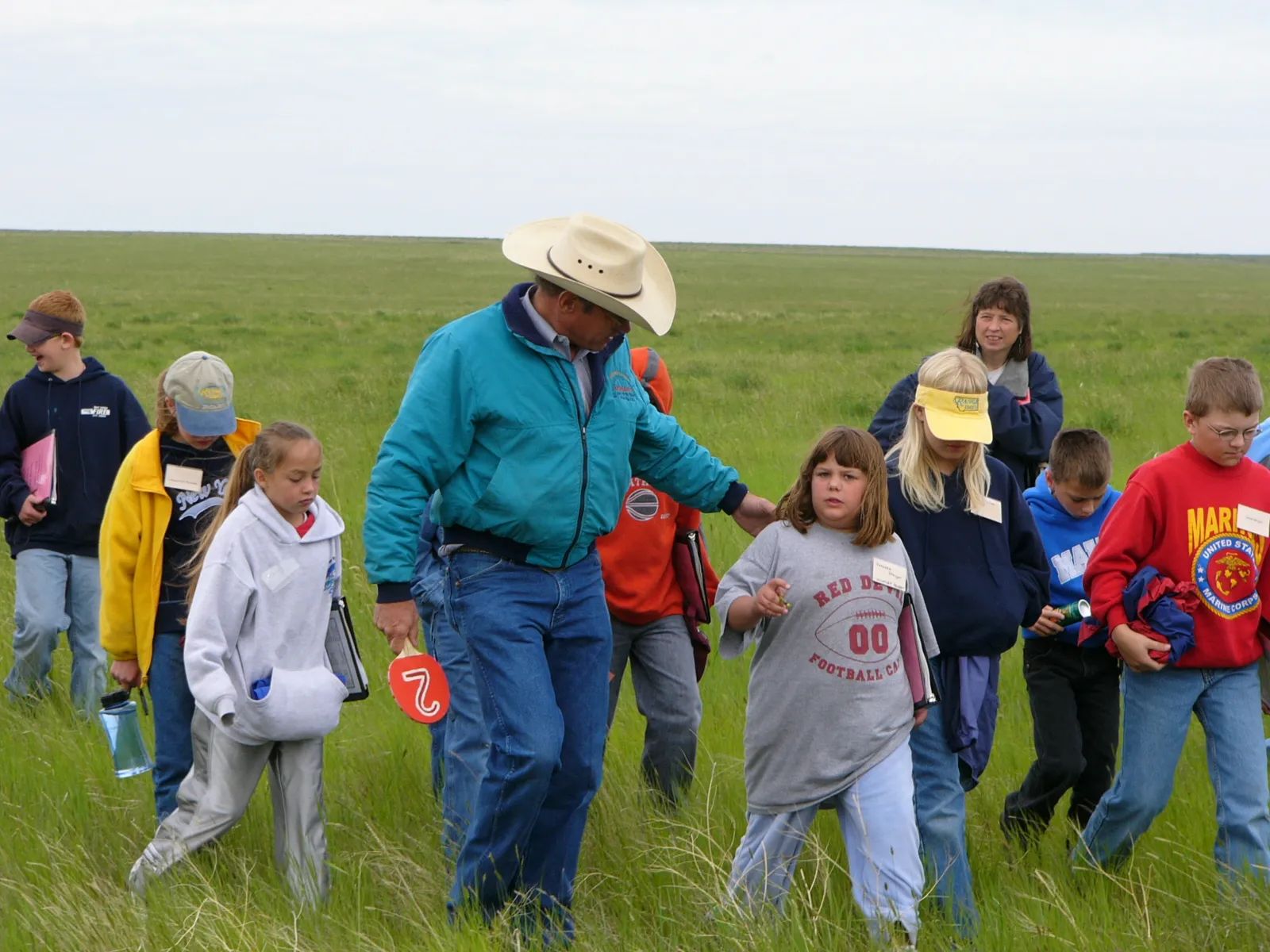
His voice is notable for another reason. Though it carries some of the exaggerated diction and drama of the long-time broadcaster that he is, it reflects his personality, capturing the honesty, good humor and sunny optimism for which he is widely known. That attitude, matched with a degree of involvement that seems to be detached from the need to sleep, makes Taylor unique in Montana.
“In the agricultural community, I think he’s a household word,” says Jim Peterson, of Buffalo, a former Executive Vice President of Montana Stockgrowers and, like Taylor, a former state senator, rancher and entrepreneur. “I mean, everybody knows him. I would guess he’s made as much of a contribution to agriculture as any individual I know.”
It is also characteristic of Taylor that his speaking abilities are themselves rooted in agriculture, and that he takes pains to credit the teacher who helped him develop those abilities.
“Everything I can do today of any consequence came from lessons I learned in FFA and high school ag education,” he says. “I learned to speak in FFA. That’s also where I learned about leadership and how to communicate and how to organize people.”
The ag education teacher at Fergus High School in Lewistown who laid the groundwork for Taylor’s career was Jim Schultz. Taylor calls him the most influential person in his life besides his father.
Taylor says he is proud of having used his skills to strengthen ag associations and to make connections between people who work the land and urban consumers and proud of his work on behalf of ag research and the College of Agriculture at Montana State University.
But in the second half of his career, he says, it has been just as important for him to be an advocate for leadership itself, to help build programs like FFA and high school Career and Technical Education programs, which train students how to lead, and how to work together for the betterment of agriculture and the state of Montana in general.
“I’ve been a huge supporter of CTE and FFA,” he says. “It’s important because everybody now recognizes that we need kids who know how to work, kids that have the skills and who can lead.”
In 2012, he helped launch the REAL Montana leadership training program, which aims to train leaders in the state’s resource industries. He has also worked to encourage the growth of Alpha Gamma Rho, the college agriculture fraternity he belonged to at Montana State University.
Along the way, he has been given top awards from or risen to leadership positions within so many organizations that a list of his accomplishments fills three typewritten pages. Elected Montana’s first president of the National Association of Farm Broadcasting in 1992, Taylor has served the NAFB for nearly 40 years and was inducted into the NAFB Hall of Fame in 2010. “It goes all the way back to his youth,” Peterson says. “He was chairman of just about everything he touched.”
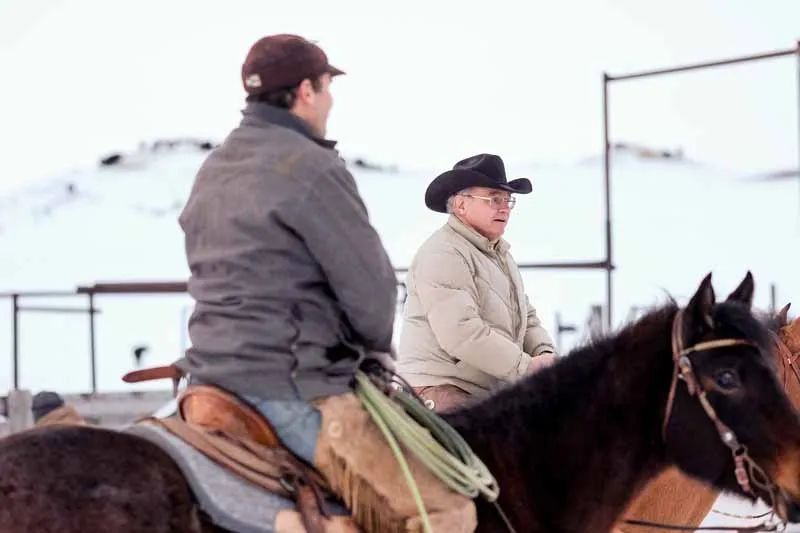
Taylor’s attachment to agriculture has deep roots. His grandfather came up from Texas in 1917, at the age of 15, inspired by uncles who had worked on some of the early cattle drives that brought livestock to Wyoming and Montana. His grandfather settled in Sheridan, Wyoming, where Taylor was born.
In 1959, a couple of years after Taylor was born, his grandfather’s ranching partner bought him out, so Taylor’s father and grandfather started looking for a new place to call their own. They found it in 1960 when they moved to their current ranch west of Sand Springs in Garfield County.
Sand Springs was 11 miles from the ranch house, so in 1962 his family moved in a one-room schoolhouse that was built in the Bull Mountains and later hauled to the Brown ranch. Six or seven local families sent their children there, too, but through all eight years of elementary school, Taylor was the only one in his grade level.
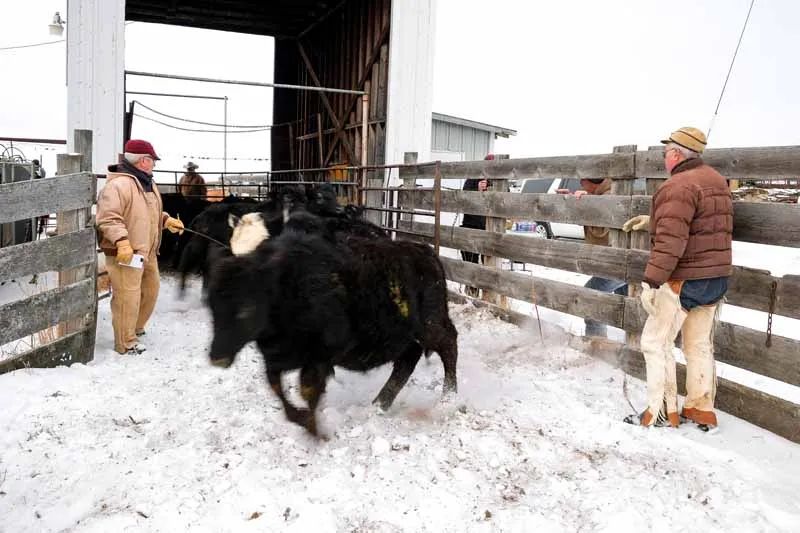
When Taylor was ready for high school, the family bought a house in Lewistown, where Taylor’s maternal grandmother lived, so the Brown children could attend high school there. It was a big change for Taylor. There were 160 kids in the freshman class and he didn’t know any of them.
“I was pretty lost,” he says. “You can’t imagine a kid more green, 87 miles from home and doesn’t know a single person in the class.”
It was Mr. Schultz and the FFA and ag education that gave Taylor a purpose, that eventually showed him what he wanted to do with his life. And in 1973, while still at Fergus High, he won the Montana State FFA public speaking title. He went on to college at MSU, where he met Shannon Clouse, the woman who would become his wife.
Though she was a native of Missoula who didn’t look like a farm kid when he met her, Taylor says, Shannon’s father, an industrial arts teacher, had a family business on Missoula’s Russell Street, the Pink Grizzly. That’s where the family had a roadside produce stand which also sold Christmas trees and fireworks. They had a few acres of land, where all the kids — Shannon had seven siblings — stayed busy, joined 4-H and raised animals.
Taylor, who served as student body president, earned a degree in agriculture at MSU, but he wasn’t quite sure he was ready to go back to the family ranch full-time. He got a big nudge in the direction of a different career by Conrad Burns, then the owner of the Northern Broadcasting System, who would go onto become a Yellowstone County commissioner and then a U.S. senator from Montana.
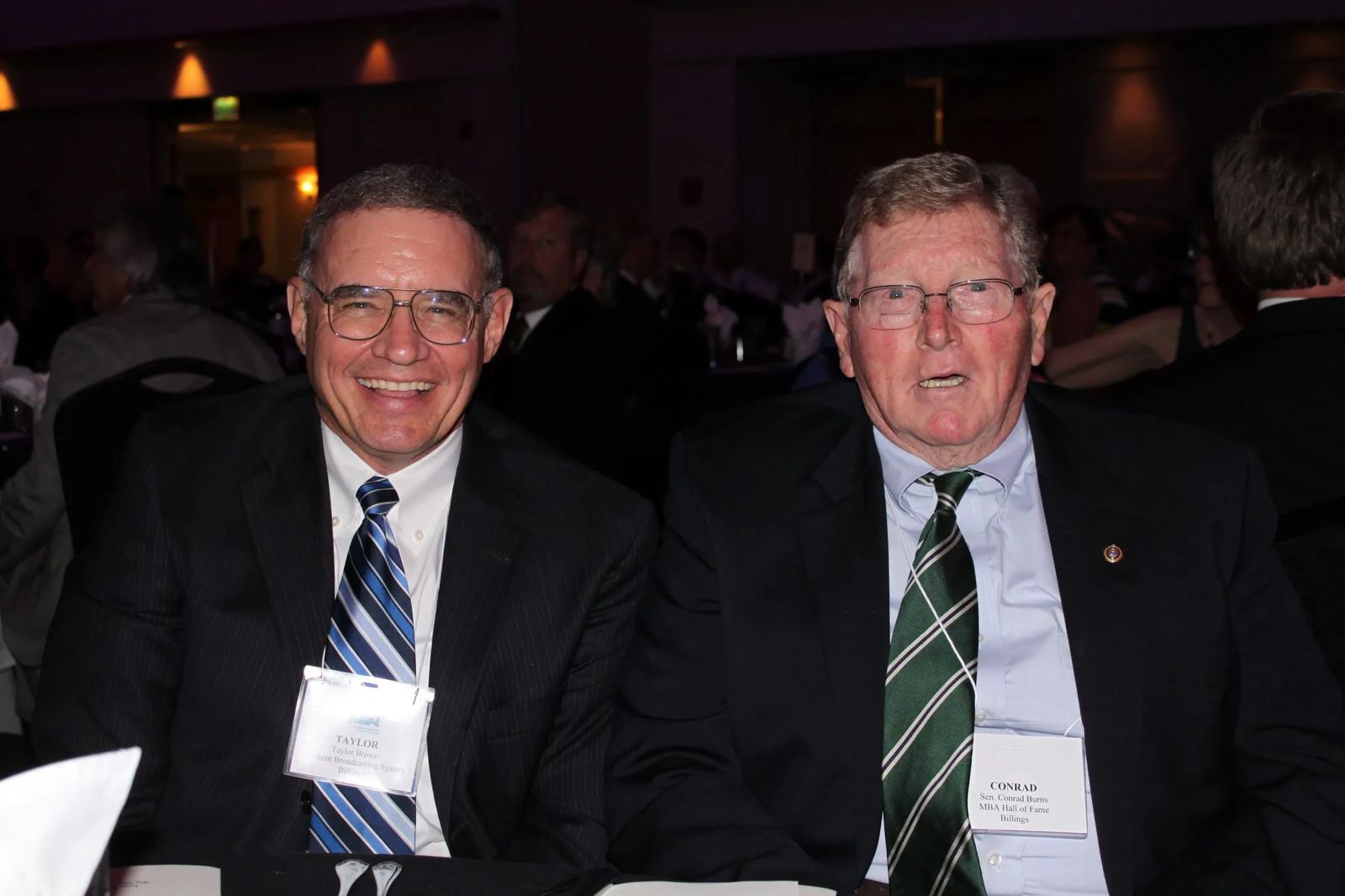
Burns, a good friend of Taylor’s father, had come to Montana from Missouri in the 1960s, working for the Billings Livestock Commission before going into broadcasting. Burns also traveled around the state to judge 4-H competitions and the like. Taylor remembers that Burns judged a competition in Jordan when Taylor, a high-schooler, was showing a steer he’d raised.
Burns clearly saw some potential in Taylor, and toward the end of Taylor’s college career, Burns offered him a job at Northern Broadcasting. Taylor went back to the ranch to work for a while, giving him a chance to think about his future, and eventually he took Burns up on the offer, going to work for him in 1979. NBS was a regional network that produced a wide variety of programs for distribution to radio and TV stations in Montana and Wyoming, and Taylor started out as a regional farm broadcaster.
“I was awful for a long time, but Conrad believed in me and gave me the opportunity,” Taylor says.
Taylor and Shannon became part owners of the NBS in the early 1980s and then bought it outright in 1986. Shannon taught for 13 years while helping out at NBS before joining Taylor full time in the business.
“She’s an equal partner in everything I do here — more than equal, actually,” he says.
As the Brown family grew, so did their business, and over time other family members signed on to work alongside Taylor and Shannon. Their daughter, Courtney, went to work full-time for Northern Broadcasting in 2015, as vice president in charge of sales and marketing. Her husband, Jonathan Kibblewhite, is the media operations manager. The Browns’ youngest son, Colter, joined NBS in 2017 and serves as its ag director. Their oldest son, Travis, has been the full-time manager of the family’s Sand Springs ranch, the L O Bar, since 2010.
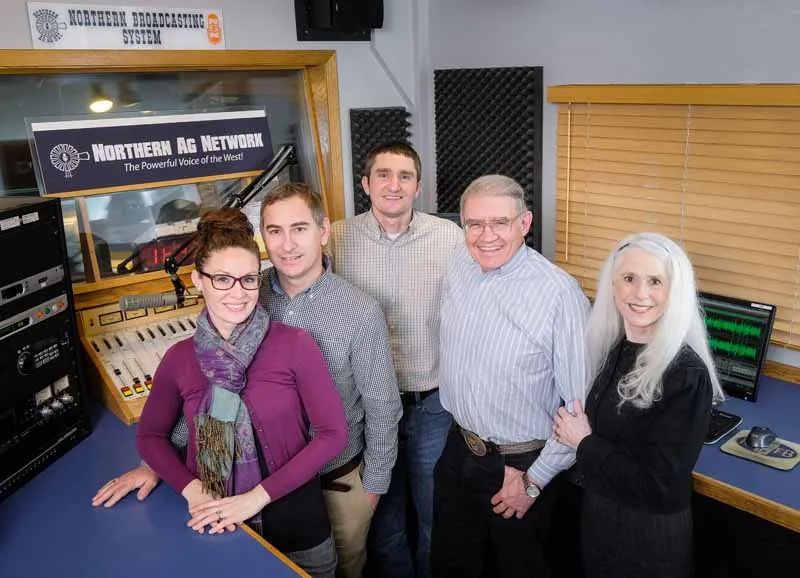
Peterson was impressed by Taylor’s ability to work smoothly with family members.
“That’s a pretty remarkable achievement when you can bring your family into your business and everybody gets along and likes each other,” he says.
Since Taylor and Shannon took over Northern Broadcasting, it has grown from four employees to 11, and in 2010, they bought their first radio station, KGHL AM-790, the oldest station in Billings. It is the flagship station of the Northern Ag Network, and in 2016 they added a 250-watt FM translator, so people can listen to the KGHL signal on 94.7 FM as well.
Northern Broadcasting consists of the Northern Ag Network, the Northern News Network, the Northern Sports Network and KGHL AM-790 and FM 94.7. The networks reach more than 70 stations in four states, delivering a wide spectrum of radio, television and digital content that deals with agriculture, weather, news, sports and talk.
For Taylor, though, success is not measured by numbers or cash flow, but by real-world impacts.
Taylor says a rancher friend once told him, “You’re providing hope. We’re sitting out there 200 miles from Billings and we’re fighting the government and the EPA and the weather and the banker and we’re fighting the markets. We’re just struggling. And you come on that radio, in our tractor cab or our pickup cab, and you give us some hope that maybe other people are in the same boat as we are, and maybe it’s gonna be all right.”
“That’s what I’m trying to accomplish,” Taylor says.
When he was starting out as a broadcaster, Taylor says, he wasn’t sure he was doing the right thing, because he regarded himself as a journalist and yet he also considered himself an advocate of agriculture.
“I said, ‘Conrad, I’m not really being an unbiased reporter here. I’m giving agriculture’s side of it,’” Taylor recalls. “And he said, ‘There’s nothing wrong with that as long as you admit it. Just don’t look in the camera and say that’s the unvarnished truth, that’s the way it is.’”
Taylor says he took that advice to heart, while at the same time always reminding himself that people who don’t agree with him have their own reasons for believing what they do. His advice: “Be kind. Be polite. Be respectful. And don’t think you know everything.”
It can be hard if you’re dealing with ideologues of any stripe, he says, because they generally have no interest in hearing new information and are unlikely to change their minds. “I’m a journalist and a little bit of a scientist, and so every day my opinion changes,” he says. “Unless I’m asleep, I learn something that changes my opinion a little bit.”
He brought that way of thinking to politics, when he was elected to the Montana Senate in 2008 and again in 2012. There he focused on state spending and taxation and is proud that through the five-year national recession that started in 2009, Montana was one of only a handful of states whose budget never ran in the red. He helped to lower business equipment taxes and worked to significantly reform worker’s compensation costs. Taylor’s passion for agriculture and education led him to chair both those Senate committees, and with bi-partisan support, he led a move to provide the first-ever performance-based funding for the university system. He also helped restore critical investment in ag research and extension and worked to increase support for Career and Technical Education.
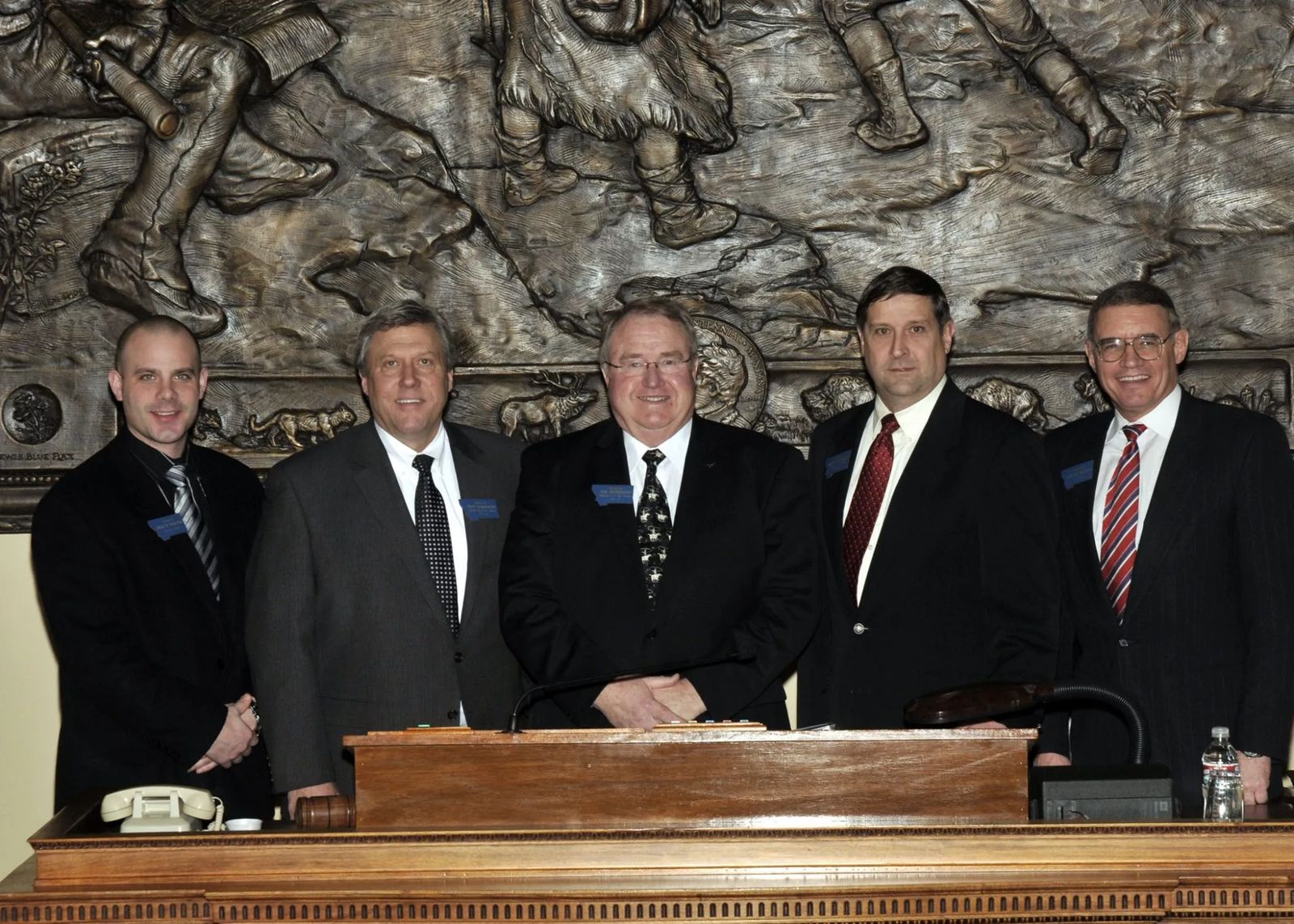
“Taylor put his constituents and his principles first,” says Llew Jones, a former state senator from Conrad who joined Taylor on some of those key votes. “He basically would never, ever listen to his party bosses over his people.”
Jones, like Taylor and Peterson a farmer-rancher and also an entrepreneur, echoed Taylor’s remarks about the value of leadership skills. He says the Legislature sometimes feels like a collection of “150 prom kings and queens,” and “among that aggressive set, it takes real leaders to come up with things that benefit the state.”
Peterson, a former president of the Montana Senate, describes Taylor’s leadership skills another way: “When you get into politics, you’ve got to learn to manage with a window and not with a mirror. Two-thirds of what’s wrong with politics right now is that all they see is the man in the mirror. … Taylor doesn’t look in the mirror. He looks out the window.”
Taylor left the state Senate after two terms because of term limits, and Peterson and Jones have been among those who have tried to talk him into running for higher office, for the governorship or the U.S. House or Senate. So far, Taylor has not been interested, though he doesn’t close the door on such a possibility in the future.
“Just about everything he’s done, he seems to be the right man for the right job at the right time,” Peterson says. “That’s why I wanted him to run for governor. But his family is very important to him.”
It’s also possible that Taylor realizes that he’s getting more done now, outside of politics, than he could if he was elected to another office. He also continues to follow some advice Conrad Burns gave him years ago when Taylor was considering an offer to go to Washington to work for then-U.S. Rep. Ron Marlenee, a Montana Republican.
Taylor asked Burns if he should take the job and Burns told him yes if he thought he’d enjoy it. “We don’t have time to do it if it’s not fun,” Burns added, and in the end, Taylor figured he’d be happier in Montana than in Washington, D.C.
That’s also why he and Shannon moved years ago from Billings to the Huntley Project community. They wanted their children to grow up in a rural environment that had an FFA program. Travis, the son who is now running the ranch near Sand Springs, went on to be the state FFA president.
As active as he is in his business and after-work pursuits, Taylor makes time for his five grandchildren, and he and Shannon still get up to the ranch in Sand Springs at least once a month. With a self-deprecating laugh, Taylor admits that he hasn’t kept up with all the new technology now involved in ranching,
“There’s not much I’m helpful on now,” he says. “The equipment is beyond my knowledge level.” But there are still plenty of chores that involve riding a horse and Taylor always volunteers for those, and he and Shannon also bought a Kubota side-by-side with a 70-gallon weed sprayer.
“She and I love doing that, and it’s a job no one else seems to have the time to do,” he says.
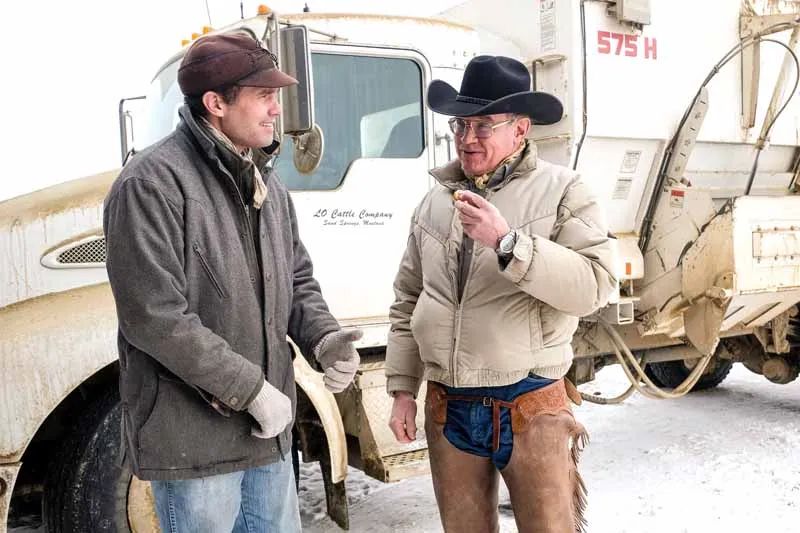
And despite all the changes in farming and ranching, Taylor says, the core of agriculture is the same as it has ever been, which is why he plans to continue doing what he can to support it, and to making sure people not involved in it appreciate the benefits of what farmers and ranchers do.
“If we value things like abundant local food, great wildlife habitat, open space and a strong economy that can create renewable wealth year after year in a harsh environment,” says Taylor, “then we must focus on helping sustain the family farms that produce those benefits for the rest of us.”
















